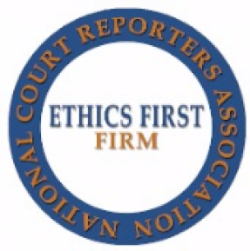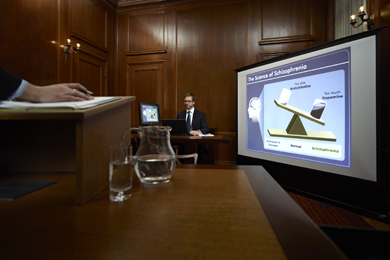Trial Presentation Professional Support for Legal Teams and Court Cases
Trial Presentation Professional Support for Legal Teams and Court Cases
Blog Article
Astound the Jury: Crucial Elements of a Powerful Test Discussion
In the world of legal advocacy, the capability to astound a jury is critical to the end result of a trial (trial presentation). Important elements such as understanding the audience, crafting an engaging narrative, and understanding verbal and non-verbal interaction are crucial components of a reliable presentation. The strategic use of aesthetic aids can considerably boost comprehension and retention of essential arguments. As these elements link, they develop a natural technique that not only informs yet also involves jurors on numerous degrees. What details strategies can truly change a common discussion right into an unforgettable experience for the court?

Understanding Your Target Market
Understanding your target market is a pivotal facet of reliable trial presentation. A successful discussion depends upon the ability to understand the demographics, worths, and proneness of jurors. This understanding informs exactly how arguments are mounted, evidence is offered, and sob stories are crafted, ensuring that the message reverberates with the jurors on a personal level.
Research indicates that jurors come from diverse histories and may have varying degrees of comprehending regarding legal process (trial presentation). Therefore, it is vital to avoid legal lingo that could push away or perplex them. Instead, employing clear, relatable language cultivates engagement and comprehension. Additionally, recognizing the jurors' possible predispositions and life experiences permits the test speaker to expect arguments and address problems proactively.
Effective trial discussion likewise includes observing jurors' reactions during the proceedings. Being attuned to non-verbal hints can give understanding into their interaction and understanding, permitting real-time adjustments in strategy. Eventually, an extensive understanding of the audience not just improves interaction however also develops relationship, boosting the probability of a beneficial outcome. Engaging with jurors as individuals as opposed to a cumulative unit is important in promoting a solid connection in the courtroom.

Crafting a Compelling Story
Crafting a compelling narrative is important in guiding jurors through the complexities of a situation. A well-structured story not just simplifies detailed legal principles but additionally involves jurors on a psychological level, making the details much more relatable and remarkable.
This message should resonate with the jurors' values and experiences, cultivating a connection that transcends simple facts. This sequential method can help jurors follow the progression of events, emphasizing cause and result.
Incorporating human aspects-- such as individual stories or anecdotes-- can additionally boost the narrative's influence. These elements stimulate empathy, permitting jurors to picture the consequences of the case on the real worlds. In addition, using a regular motif throughout the discussion enhances the primary debate, making it less complicated for jurors to preserve crucial points.
Eventually, an engaging story changes a test discussion from a simple recounting of truths right into an influential tale that astounds the court, urging them to ponder with both factor and emotion.
Making Use Of Visual Help
Incorporating aesthetic help into a trial presentation can considerably enhance jurors' understanding and retention of info. Visual products such as graphes, representations, photographs, and video clips can transform complex lawful ideas and proof into quickly absorbable layouts. By involving multiple senses, these help allow jurors to picture the case's crucial elements, making it simpler for them to follow along and comprehend intricate information.
In addition, well-designed visual aids visit this site right here can stress important points and emphasize connections in between various items of evidence. For instance, timelines can efficiently show the sequence of events, while annotated images can clear up specific information relevant to the instance. This not just aids in understanding yet additionally enhances the narrative offered by the lawyer.
Extremely complex or cluttered visuals might bewilder jurors and take away from the message. Ultimately, effective aesthetic interaction can be a powerful tool in convincing jurors and aiding them reach notified final thoughts.
Mastering Verbal Communication
Effective spoken interaction is vital in a trial discussion, as it functions as the main ways whereby lawyers convey their arguments and get in touch with jurors. Mastering this skill involves clearness, persuasion, and involvement. Lawyers have to articulate their points clearly and concisely, staying clear of lawful lingo that might confuse jurors. Simpleness in language fosters understanding and aids jurors understand complex concerns presented throughout the trial.
In addition, tone and pacing considerably effect just how messages are received. A confident tone shares authority, while suitable pacing enables jurors to absorb info without feeling bewildered. Attorneys should additionally differ their vocal inflections to emphasize crucial factors and preserve jurors' passion throughout the discussion.
Furthermore, the organization of verbal arguments is vital. Structuring the narrative practically and coherently helps jurors adhere to the lawyer's logic, making it much easier for them to preserve important information. Making use of influential methods, such as narration, can also improve the emotional resonance of the arguments provided, therefore producing a much more extensive link with jurors.
Eventually, understanding spoken communication not only strengthens a lawyer's case however likewise promotes trust fund and rapport with the jury, substantially improving the possibilities of view it a positive judgment.

Engaging With Body Language
Nonverbal interaction plays a vital function in test discussions, frequently sharing messages that words alone can not express. Body movement, including gestures, pose, facial expressions, and eye get in touch with, considerably affects exactly how jurors view the credibility and sincerity of the presenter. A certain position, with shoulders back and an open position, can instill depend on, while closed-off body language may suggest defensiveness or uncertainty.

Faces ought to show the feelings connected with the case, reinforcing the narrative existing. As an example, a genuine expression throughout a touching minute can generate compassion and strengthen the sob story. Inevitably, mastering body language is necessary for effective test this content presentations, as it enhances verbal communication and establishes an engaging presence that reverberates with the court.
Conclusion
In verdict, captivating the jury requires a calculated method that incorporates understanding the audience, crafting an engaging story, utilizing visual aids, grasping verbal communication, and involving through body language. Each element plays a critical function in producing an effective trial discussion that resonates with jurors on both psychological and intellectual levels (trial presentation). By integrating these components properly, legal experts can substantially boost their ability to encourage and influence court decision-making
Report this page